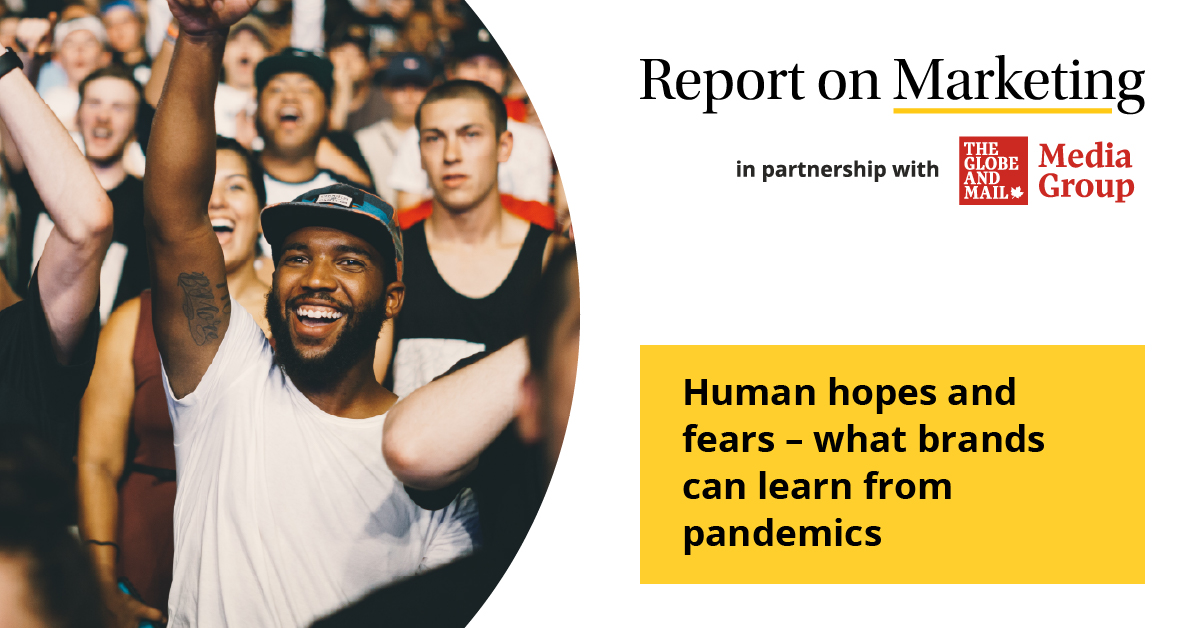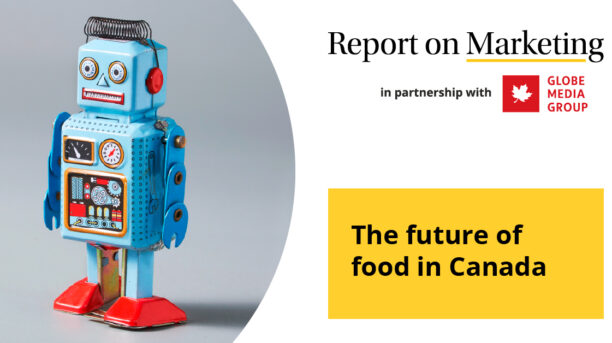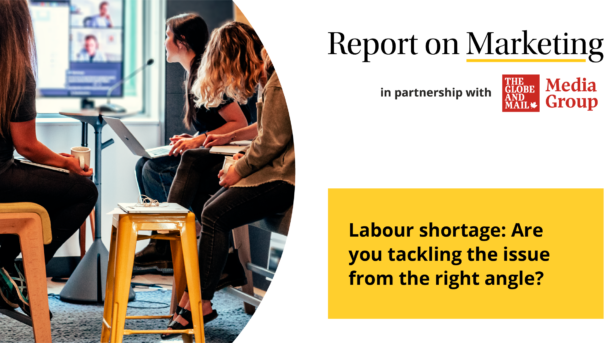At the recent Institute of Communication Agencies Northern Maverick Collective event, Jean-Xavier Wilhelmy, Director, Lead Strategy at Cossette, spoke about the effects of a global pandemic through a behavioural science lens.
The presentation followed Cossette’s historic deep-dive into two past pandemics, together with analysis of the fallout from COVID-19. Wilhelmy was looking to identify patterns of human behaviour that are repeated in these pandemics to help people and brands better adapt to what’s coming in the future.
He looked in detail at three main pandemics – Bubonic plague in the 14th Century, the HIV/AIDS outbreak, and COVID-19. The findings were fascinating, especially in the identification of parallels and common human behaviours that emerge during pandemics despite them being hundreds of years apart.
Common links in pandemics
Above all, Wilhelmy says, fear is always there in pandemics: “It’s a constant that’s directly linked to our survival instincts, and pandemics create the biggest kinds of fear – about dying, our health, the safety of our loved ones. Then we often panic, because we sense we are losing control.” This makes us behave in ways, often violent or discriminatory, that gives us a false impression of gaining back some control. It also drives us to think that buying a hundred toilet rolls in the store is the only thing that makes sense and protects us. There’s an upside too, he says: “However, fear can encourage the best, as well as the worst, from people. On the bright side, some humans are great at getting together and collaborating in times of crisis.”
Other interesting behaviours in common across pandemics, certainly in the case of Bubonic plague and COVID-19, include population migration to more rural areas. Wilhelmy highlighted how, during the Bubonic Plague of 1347-51, there was mass migration away from European cities to the countryside for reasons of safety and because it gave populations a sense of control in the face of massive fear. This migration led, ultimately, to political and social instability and significant changes to social constructs. He sees a similar pattern due to COVID-19, with urban populations escaping to less densely populated areas and working from home. Both Toronto and Montreal saw record numbers of people leaving in the early months of the pandemic – 50,375 people left Toronto, while 24,880 people departed Montreal for more rural areas in Quebec in the year to July 2020, according to Statistics Canada.
Wilhelmy is unsure of the degree of permanence of this trend but expects some people to return to the city: “Human exoduses rocketed – just like with the plague there were those that left in a hurry. How many will come back? I’m not sure but the countryside isn’t made for everyone.”
Opportunities for brands
There is good news for businesses, however, because Wilhelmy argues that we at least now have the knowledge and ability to plan around disruptions in human behaviour.
Pandemics tend to either disrupt or accelerate certain behaviours, but he says: “With the COVID-19 pandemic, everything regarding online and food delivery acceleration will probably remain and only increase. However, while there has been significant disruption of human interaction, activity in events, concerts, and live interaction is likely to return to a large degree. As soon as I can go back to concerts I’ll probably go to more over a year than I would otherwise. A lot of people are missing a lot about their lives and where this relates to social interactions they will go back. Living in a world without human interaction is inconceivable for many people.”
This provides great potential for businesses that anticipate this return. Wilhelmy also sees a bright future for food brands that anticipate consumer need following the pandemic. He says: “COVID-19 raises consumer questions that, if answered successfully, will mean a better performance. Questions along the lines of ‘What is it?’, ‘Is it healthy?’, ‘Is it local, where does it come from?’, ‘When do I make an exception?’, and ‘When is it OK to indulge?’”
There are possibilities around social changes too. The pandemic has brought again into light some major issues in society: income equality; the gender gap; Black Lives Matter; #MeToo; systematic racism and lack of diversity. Wilhelmy says: “Nobody can disagree that we have a deep need for diversity and inclusivity, understanding and opening our world to people, but we’re also seeing very strong pressure from localities, provinces and countries to push the local aspects of their brand more than ever. And that creates tension. Local brands that get to grips with the message of being proud to be Canadian without alienating a broad audience will prosper.”
Embrace optimism
In general, says Wilhelmy, behaviours from previous pandemics, and those emerging from COVID-19, highlight that we shouldn’t try to predict the future but learn from the past to embrace some core principles: “Such as understand your consumer, give them reasons to believe in you, and always remember that human interaction isn’t dead.”
Above all, Wilhelmy urges businesses and brands to “stay positive because we all need a spirit of optimism”. He concludes: “Brands have a short window to make a difference in consumers’ minds before they risk becoming irrelevant, and need to be smart and balanced because customers will know when they’re being overtly commercial. Just keep in mind that people even expect businesses to help them regardless of a crisis, so these expectations became greater than ever over the last year.”
Cossette is a member of the Institute of Communication Agencies. Report on Marketing is where leading Canadian agencies showcase their insights, cutting-edge research and client successes. The Report on Marketing provides a valuable source of thought leadership for Canadian marketers to draw inspiration from. Find more articles like this at the Report on Marketing.
See all Ideas & Insights



